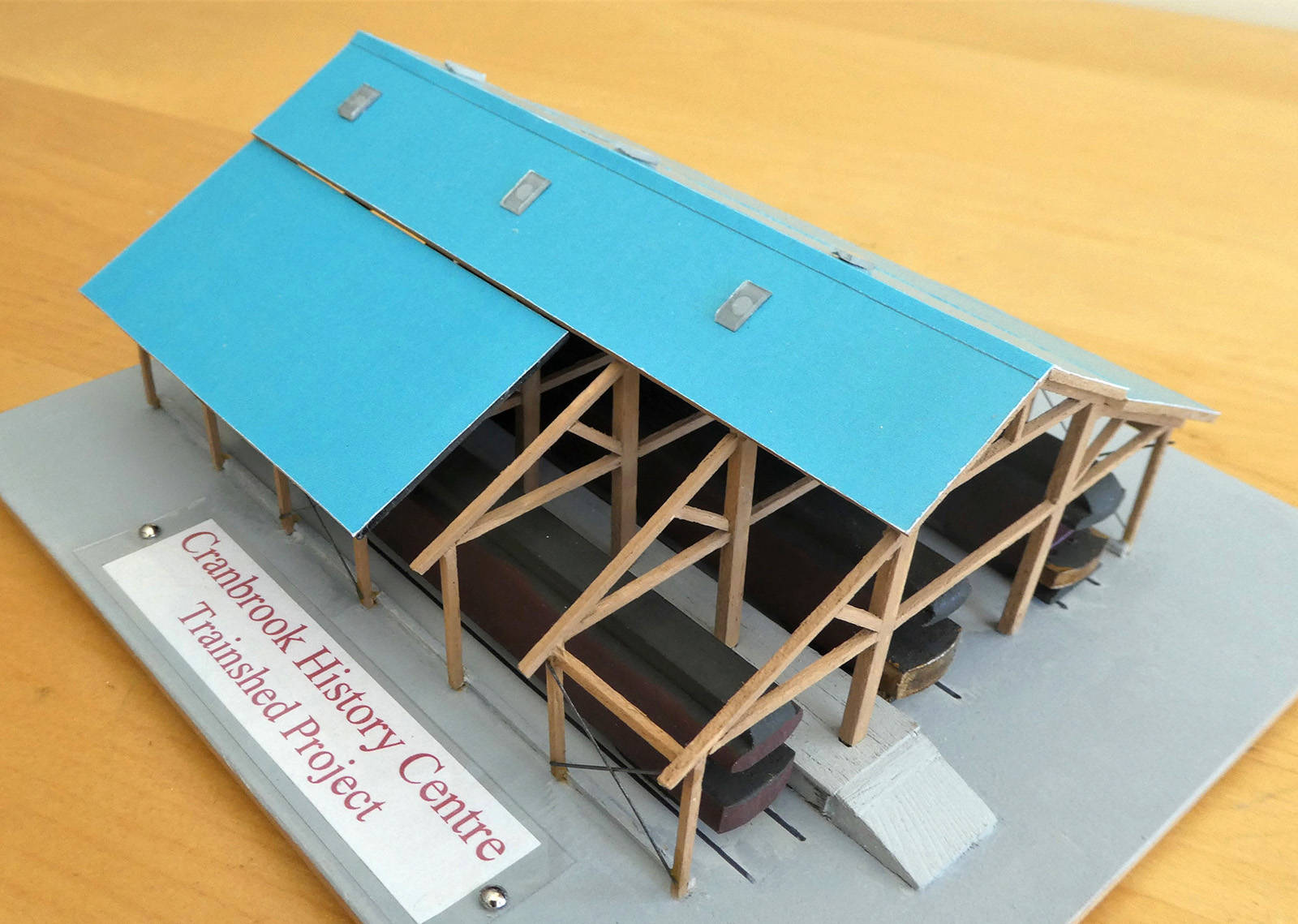Paul Rodgers
Ground was broken on the first phase of the structure that will protect and preserve the heritage railcars at the Cranbrook History Centre on Monday, April 16. The project, which is ultimately slated to cost over $4 million, will be constructed over numerous phases as they collect money from donations, grants, sponsorships and fundraising. Kimberley’s Tyee Homes has been secured as the contractor for this project.
WATCH:
The groundbreaking ceremony commenced construction of the first module. This 16,600 sq. ft. building will cover nine cars on tracks one, two and three. Module 2 will be 12,600 sq. ft. and cover the remainder of the cars on tracks one and two. These will each cost about $1 million and will be fire rated and equipped with full sprinkler systems.
Phase one will take about four months, and later phases of construction could potentially see south facing solar panels installed, which is anticipated to provide enough energy to operate the entire museum, eliminating over $60,000 in yearly Hydro bills, and also possibly feed power back into the grid.
READ MORE: Plan to cover rare train cars approved
The College of the Rockies will erect a grand entrance, guiding guests from the existing museum building into the new train structure. Further down the road, walls, heating, air condition and concrete floors will be used as display areas and overflow gathering area for events taking place in the Royal Albert Hall.
Tammy Morgan, executive director for the Cranbrook History Centre, said that the protection of the heritage coaches is badly needed as “weather is winning the race currently, and we must get these railcars protected or risk having to scrap some of them as a few railway museums have been forced to do in recent years.”
Morgan added that the safety of their guests and staff is of critical importance to the museum. “The development of the train shed and platform will allow us to ensure [their] utmost safety.”
A sponsorship wall will be constructed to display all the various businesses, organizations and individuals who contribute funds to this project.
“We’ve got a number of funders that are coming on board with us,” said Morgan. “We’re going to have a wall that’s going to show all the donations and donors across the board. So we are canvassing for support through different grants as they come available.”
Morgan reiterated the importance of protecting these historic trains from the elements, explaining that each year, roof repairs to the train cars costs anywhere from $10,000 to $20,000.
“Trains were not made to be stationary, so if we do not cover them, this will be a lost piece of history. So by us allowing the roof to come up, allows us to keep that history here and develop it further. It also allows us to expand the museum on a broader base.”
